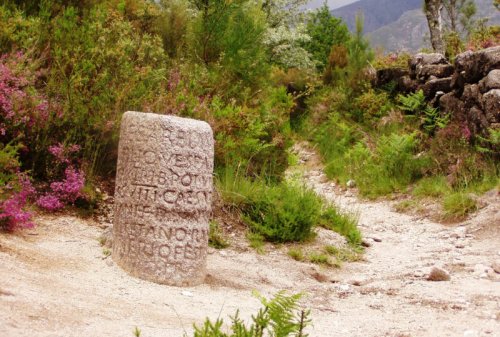
Credit: Júlio Reis, Wikipedia, CC BY-SA 3.0
Most of the time when Jesus was teaching, the Lord was outside, and I often wondered if much of what He said was based on what He saw around him. When Jesus said, “See how the flowers of the field grow,” (Matthew 6:28), I suspect there was a field nearby.
So, when Jesus told His disciples, “And if anyone forces you to go one mile, go with him two miles,” (Matthew 5:41 ESV), I wonder if they were actually standing within eyesight of an ancient Roman milestone.
Referred to as miliarium, the columns were routinely made of granite or marble and were typically set up to mark the distance of 1,000 double Roman steps, approximately one mile today, on a road.
Since people only traveled a few miles each day, these stones provided valuable information on how far they had journeyed.
In addition to supplying the one-mile distance, the stone also had the name of the Roman Emperor responsible for the road’s construction and typically the military unit, overseeing the road’s maintenance.
The stones often supplied other information such as how far it was to Rome and/or an important city on this particular road.
It is also possible, that Jesus and the disciples were in the eyesight of a Roman official or centurion. This is because the Greek word, aggareuō, translated as force or compelled in this verse, is derived from an ancient Persian word that allowed forced conscription.
It referred to the practice where official messengers of the Persian government were legally allowed to compel any person to aid them in the fulfillment of their government duties. This could include carrying items or even providing a horse or ship.
In a broader sense, it was a form of taxation, but it was also one that could easily be abused.
The Romans employed a similar policy, and it was more broadly used, as the army frequently ‘requisitioned’ Jewish men or their animals to help them in their official duties.
We see an example of this in action when the soldiers forced or compelled (angareuō) Simon of Cyrene to carry Jesus’ cross (Matthew 27:32) when the Lord was no longer able to carry it.
